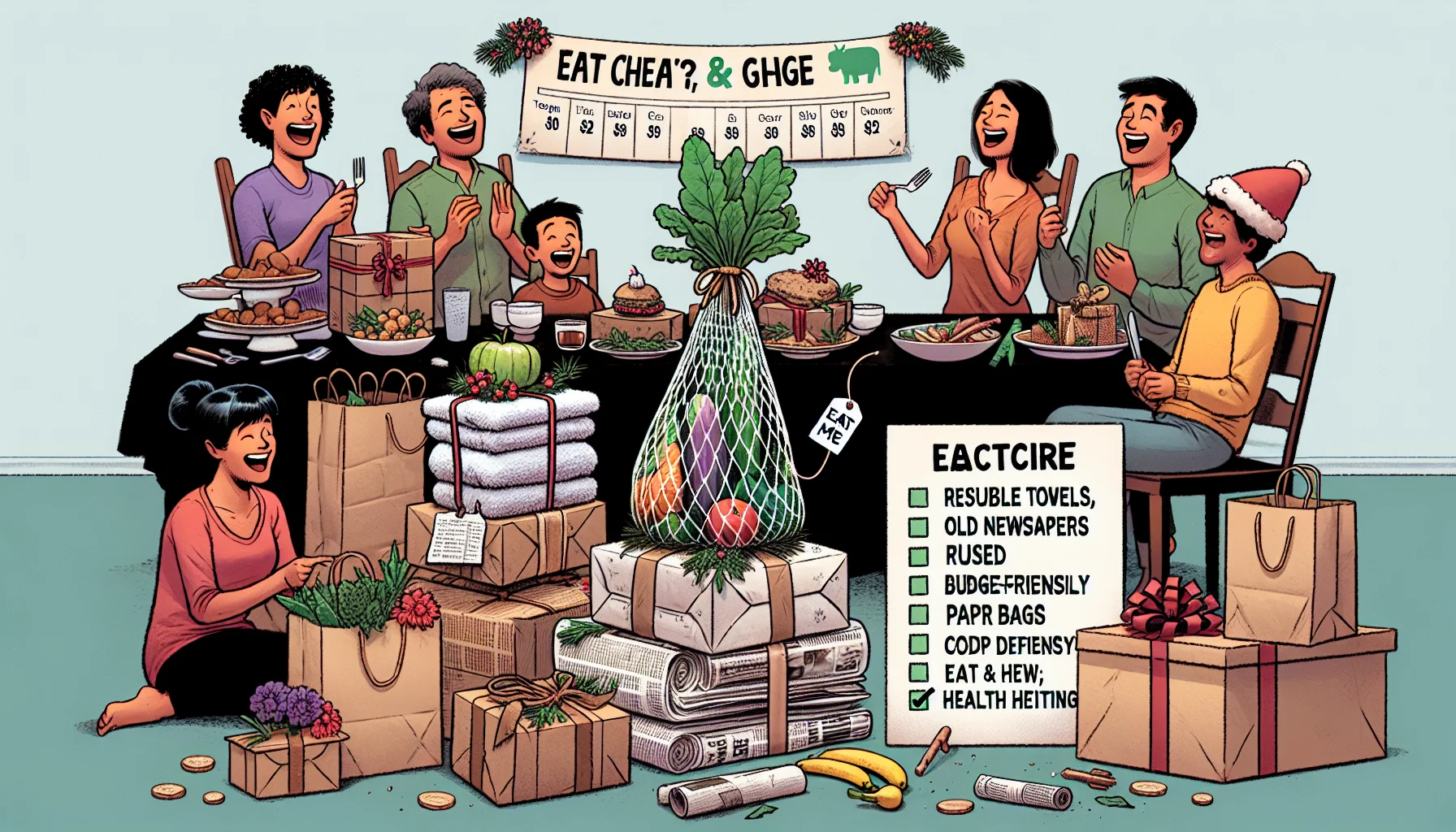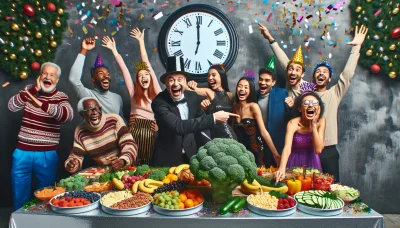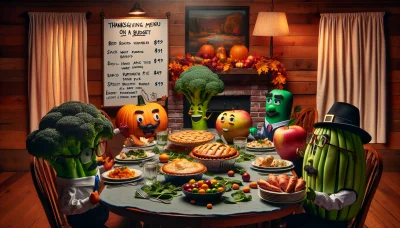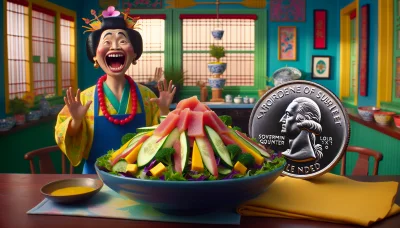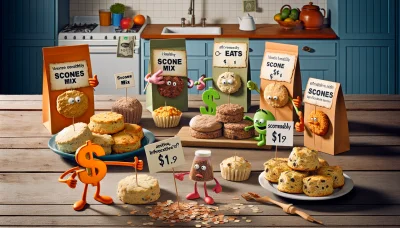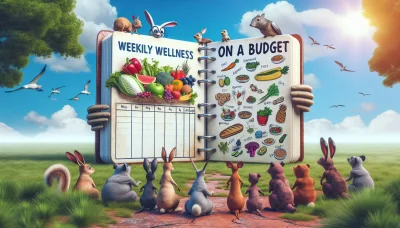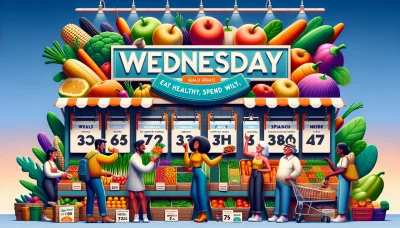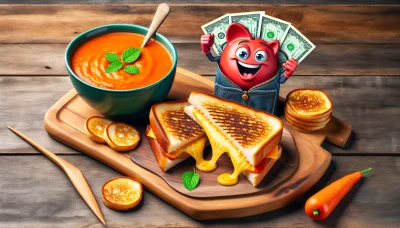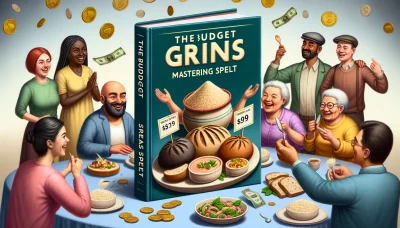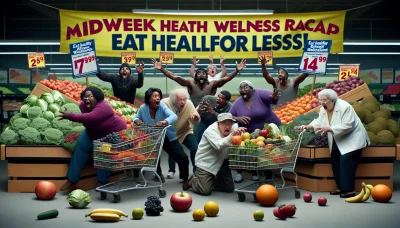Eco-Friendly Gift Wrapping Ideas Quiz
Test Your Knowledge
Question 1 of 11
Eco-Friendly Gift Wrapping Ideas
As awareness about environmental conservation grows, incorporating eco-friendly practices into every aspect of our lives has become increasingly important. Gift-giving is no exception. Traditional wrapping materials, often plastic-based or non-recyclable, contribute significantly to environmental pollution and waste. By choosing eco-friendly gift wrapping options, we not only minimize our ecological footprint but also promote a healthier lifestyle and environment. This approach encourages both the giver and the recipient to think more consciously about sustainability and the impact of their actions on the planet. Embracing eco-friendly gift wrapping is a simple yet impactful way to contribute to the preservation of our environment for future generations.
Why Choose Eco-Friendly Wrapping?
Choosing eco-friendly wrapping options for gifts is not just a trend; it's a meaningful step towards a more sustainable and responsible way of living. The benefits of selecting eco-friendly gift wrapping extend far beyond the aesthetic appeal, positively impacting both the environment and personal health. One of the most significant advantages is the substantial reduction of waste that otherwise contributes to overflowing landfills and pollution.
Traditional gift wrapping materials, such as plastic wraps and foils, are often not recyclable and can take hundreds of years to decompose. By opting for eco-friendly alternatives, such as recycled paper, cloth wraps, or even reusable containers, we can significantly decrease the volume of waste generated during holidays and special occasions. This simple choice helps conserve natural resources and reduces our carbon footprint, contributing to a healthier planet.
Moreover, eco-friendly wrapping materials are typically made from natural, non-toxic materials that are safer for both our health and the environment. Many conventional wrapping papers contain chemicals and dyes that can be harmful if ingested or come into prolonged contact with the skin. By choosing eco-friendly options, we minimize our exposure to these potentially hazardous substances, ensuring a safer environment for ourselves and our loved ones.
In conclusion, the shift towards eco-friendly gift wrapping is an easy yet effective way to make a positive impact on the world around us. Not only does it help in reducing waste and conserving resources, but it also promotes the use of safe, non-toxic materials. Making the switch to eco-friendly wrapping options is a thoughtful approach to gifting that benefits both the planet and our personal health, making celebrations more meaningful and sustainable.
Top 7 Eco-Friendly Gift Wrapping Ideas
- Recycled Paper: Utilize paper that has been previously used or is made from recycled materials to wrap gifts, adding a unique touch while reducing waste.
- Cloth Wraps: Adopt the traditional Japanese method of Furoshiki, using fabric to wrap gifts. These cloths can be reused for various purposes, making them a sustainable choice.
- Reusable Containers: Gift items in reusable containers such as tins, baskets, or jars that can serve a purpose beyond just being packaging.
- Plantable Seed Paper: Wrap gifts in plantable seed paper. Once the gift has been opened, the paper can be planted to grow herbs or flowers, contributing to a greener planet.
- Newspaper Wraps: Repurpose newspapers as gift wrap for an eco-friendly and vintage look. It's a great way to recycle paper that would otherwise be thrown away.
- Biodegradable Decorations: Use natural materials like twine, leaves, or flowers to decorate your gifts instead of plastic ribbons and bows.
- DIY Fabric Gift Bags: Sew your own gift bags from leftover or upcycled fabric. These bags can be used multiple times, reducing the need for disposable wrapping materials.
DIY Natural Dyes for Gift Wrapping
Creating natural dyes for gift wrapping is not only an eco-friendly practice but also a fantastic way to link the concept of healthy eating with sustainable living. By using fruits and vegetables, you can generate a wide array of vibrant colors that can make your gifts stand out, all while ensuring you're not contributing to pollution. This guide will walk you through the basics of making your own natural dyes from common kitchen leftovers.
First, let's explore the types of fruits and vegetables that are perfect for creating dyes. Berries, such as strawberries and blueberries, offer beautiful shades of red and blue. Spinach and kale provide a lush green, while onion skins can create a rich orange or deep yellow. Beets are your go-to for a striking magenta. Not only are these foods nutritious for our bodies, but they also serve a dual purpose in our homes as natural dye agents.
To start, you'll need to prepare your chosen fruits or vegetables by chopping them into small pieces. This helps to release the pigments during the boiling process. Place the chopped pieces into a pot, cover them with water, and bring to a boil. Simmer the mixture for about an hour, allowing the colors to infuse into the water. The longer you let it simmer, the more saturated the dye will become.
Once you've achieved the desired color strength, strain the liquid to remove the solid bits. Your dye is now ready to use for coloring natural fabrics or papers for gift wrapping. It's a good idea to test the dye on a small piece of the material you plan to use to ensure the color transfers well. Keep in mind that natural dyes may not be as predictable or as permanent as synthetic ones, but their unique variations and eco-friendly properties make them worthwhile.
By embracing the process of making and using natural dyes, you're not only giving a second life to food waste but also promoting a healthier, more sustainable way of living. This approach to gift wrapping is sure to add a personal touch to your presents, making them even more special. So, the next time you're wrapping a gift, consider reaching for natural dyes. It's a small step towards a healthier planet and a fun way to incorporate the beauty of nature into your gift-giving.
Incorporating Edible Elements
Using edible items like herbs, fruits, and baked goods in gift wrapping is not only a unique approach but also adds a sustainable and health-conscious touch to your gifts. This method not only enhances the appearance of your gifts but also ensures that nothing goes to waste.
Herbs such as rosemary, thyme, or lavender can be tied around your gift or incorporated into the wrapping paper itself. Not only do they add a beautiful, natural look, but they also provide a delightful aroma. This approach works particularly well for gifts that are meant to soothe or pamper, aligning with the natural benefits of the herbs used.
Fruits like small apples, oranges, or even clusters of berries can be used as part of the gift decoration. Attached with a simple twine or ribbon, they add a pop of color and a touch of whimsy. For a more festive touch, consider using dried slices of orange or apple, which can also serve as a fragrant decoration.
Baked goods offer a warm, personal touch to your gift wrapping. Small cookies or mini loaves can be wrapped in clear cellophane and tied with a ribbon, then attached to the outside of your gift. This not only decorates the gift but provides a sweet treat for the recipient to enjoy.
Incorporating edible elements into your gift wrapping is a thoughtful and innovative way to present your gifts. It's an approach that is sure to delight and surprise your loved ones, making your gifts memorable for all the right reasons.
Reusable Wrapping Materials
Embracing reusable wrapping materials is not only a creative way to present gifts but also plays a significant role in reducing waste and promoting environmental sustainability. Below is a list of materials that can be reused for gift wrapping, each offering a unique aesthetic and contributing to a more sustainable lifestyle:
- Fabric Scraps: Utilizing leftover fabric from other projects is an excellent way to give your gifts a personal touch. Fabric wraps can be reused multiple times, reducing the need for disposable paper.
- Old Maps: Give your gifts an adventurous theme by wrapping them in old maps. This repurposing not only saves maps from ending up in landfills but also adds a unique charm to your presents.
- Newspapers: Newspapers are readily available and can be turned into attractive wrapping paper. It's a great way to recycle the newsprint and give it a second life encasing gifts.
Choosing any of these materials for wrapping gifts not only adds a personal touch to your presents but also aligns with the efforts to reduce waste and protect our environment. Let's make a difference, one gift at a time.
Conclusion: The Impact of Eco-Friendly Wrapping on Healthy Living
Choosing eco-friendly gift wrapping is more than just a trend; it's a reflection of a deep commitment to promoting a healthier lifestyle and contributing to the sustainability of our planet. By selecting materials that are biodegradable, recycled, or reusable, individuals take a significant step towards reducing the environmental impact associated with traditional gift wrapping.
Eco-friendly wrapping options, such as recycled paper, cloth wraps, and biodegradable materials, not only minimize waste but also reduce the demand for the production of new materials. This, in turn, leads to a decrease in the energy and resources consumed during manufacturing processes, contributing to a reduction in carbon footprint and promoting cleaner air and water.
Moreover, embracing eco-friendly gift wrapping practices encourages a culture of mindfulness and sustainability. It inspires others to consider the environmental impact of their choices and fosters a community committed to protecting our planet. By adopting these practices in our gift-giving, we contribute to a healthier living environment for ourselves and future generations.
We encourage everyone to explore and adopt eco-friendly gift wrapping options. Not only do these practices support the health of our planet, but they also add a unique and personal touch to your gifts, making them even more special. Let's make a conscious decision to choose eco-friendly wrapping and contribute to a healthier, more sustainable world.
